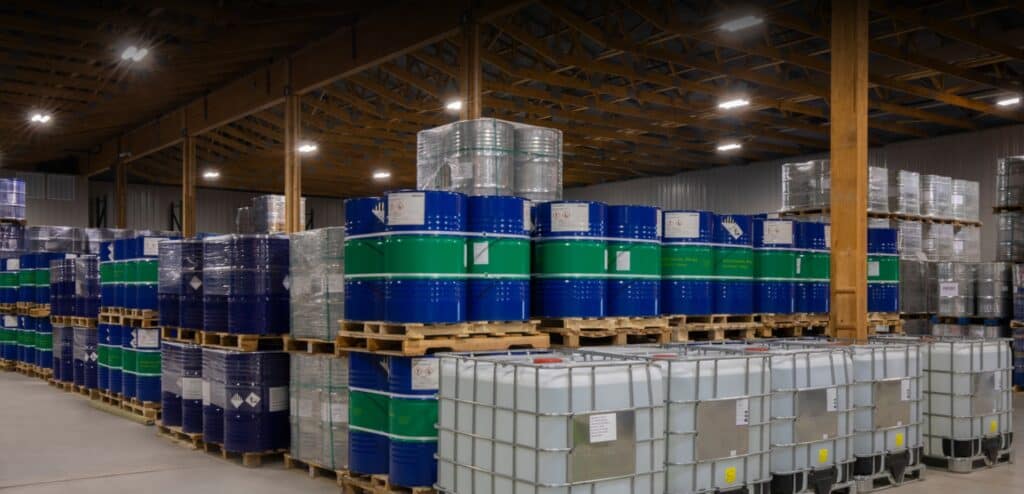In the world of modern food and beverage innovation, flavors are everything. From the nostalgic taste of a favorite childhood candy to the comforting aroma of a classic cola, iconic flavors shape our experiences and memories. Behind many of these beloved tastes are synthetic aroma chemicals, carefully engineered to create consistent, captivating flavor profiles. As the industry continues to evolve, the role of synthetic aroma chemicals becomes even more crucial in meeting the growing demand for high-quality, reliable, and inventive flavor solutions.
At the forefront of supplying these essential components is M&U International, a premier supplier dedicated to providing top-tier flavor and fragrance materials to businesses around the world.

What Are Synthetic Aroma Chemicals?
Synthetic aroma chemicals are compounds designed to replicate or enhance the scents and tastes found in nature. Unlike natural extracts, which are derived directly from fruits, plants, or spices, synthetic aroma chemicals are often created through controlled chemical reactions in a lab. This method allows for greater precision, consistency, and variety in the resulting flavors.
Some common synthetic aroma chemicals include:
- Ethyl maltol: Sweet, candy-like flavor
- Vanillin: Primary component of vanilla flavor
- Benzaldehyde: Classic almond or cherry flavor
- Isoamyl acetate: The familiar banana flavor
These chemicals form the backbone of many products we consume daily, offering vibrant taste experiences that might otherwise be too costly or difficult to produce from natural sources.
How Synthetic Aroma Chemicals Shape Iconic Flavors
Iconic flavors are those that consumers instantly recognize and associate with particular products or experiences. Creating such recognizable tastes requires a deep understanding of both chemistry and sensory perception. Synthetic aroma chemicals allow flavorists to recreate the complex profiles of natural foods or to invent entirely new flavor experiences.
For instance:
- The bright, sweet notes in a strawberry-flavored candy often rely on a combination of synthetic esters and aldehydes to mimic the fruit’s real aroma.
- Popular soft drinks use a blend of synthetic and natural ingredients to ensure their signature flavors taste identical, bottle after bottle.
- Vanilla ice cream, even when labeled “natural,” often includes synthetic vanillin to bolster and stabilize its rich, creamy flavor.
Without synthetic aroma chemicals, achieving this level of familiarity, intensity, and consistency across products would be nearly impossible.
Benefits of Using Synthetic Aroma Chemicals
There are several major advantages to utilizing synthetic aroma chemicals in flavor creation:
1. Consistency
Natural ingredients can vary based on growing conditions, harvest times, and processing methods. Synthetic chemicals ensure that each batch of a product maintains the exact same flavor profile, fostering customer loyalty and satisfaction.
2. Cost-Effectiveness and Sustainability
Producing natural flavors can be expensive and resource-intensive. By using synthetic alternatives, companies reduce the environmental impact associated with farming, harvesting, and transporting raw materials. Synthetic solutions often require fewer resources, contributing to more sustainable production models.
3. Innovation and Creativity
Synthetic aroma chemicals offer flavorists the freedom to create flavors that might not exist naturally. By combining different molecules, new and exciting tastes are developed—offering limitless possibilities for culinary innovation.
For those looking to source high-quality food chemical products, M&U International offers a comprehensive range of materials essential for crafting both traditional and groundbreaking flavors.

Addressing the Natural vs. Synthetic Debate
A common misconception is that synthetic flavors are inferior to their natural counterparts. However, in many cases, synthetic chemicals provide a purer, more consistent, and sometimes safer option than natural extracts, which can contain allergens or impurities.
Additionally, both synthetic and natural flavors undergo rigorous safety evaluations before they are approved for use in food products. Choosing between synthetic and natural often comes down to balancing factors like cost, sustainability, flavor intensity, and consumer expectations.
Educating consumers about the science and benefits behind synthetic aroma chemicals is key to overcoming biases and promoting informed choices.
The Future of Flavor Creation with Synthetic Aroma Chemicals
As consumer tastes continue to shift towards health-conscious and environmentally friendly products, the role of synthetic aroma chemicals in creating iconic flavors will only grow stronger. Advances in biotechnology, green chemistry, and sustainable sourcing are making it possible to create synthetic aroma compounds that are even more eco-friendly and tailored to specific dietary needs, such as vegan or allergen-free products.
In the years to come, expect to see synthetic aroma chemicals playing a vital role in not only preserving beloved classic flavors but also ushering in a new era of culinary creativity. Companies like M&U International are poised to lead this transformation by providing innovative, reliable ingredients that meet the highest industry standards.
Celebrating the Importance of Flavors and Synthetic Aroma Chemicals
Flavors are an essential part of our sensory world, and synthetic aroma chemicals are a critical tool in crafting the tastes that define generations. Whether replicating the comforting familiarity of a favorite snack or pushing the boundaries with bold new inventions, synthetic aroma chemicals are central to the art and science of flavor creation. By embracing the capabilities of these innovative compounds and working with trusted partners like M&U International, brands can continue to deliver iconic flavors that captivate and inspire.